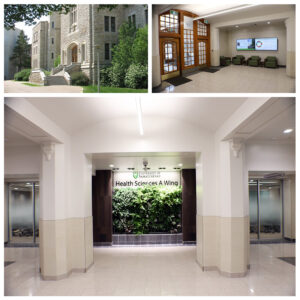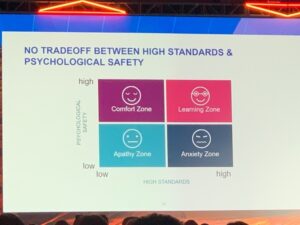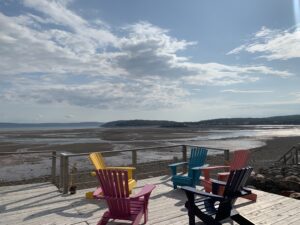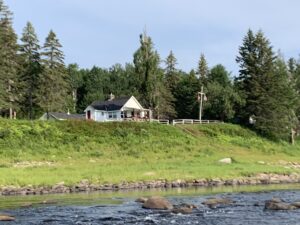I would like to take this opportunity to wish all of the learners, faculty and staff at the CoM a happy New Year and decade! With all the hard work we have done in the last five years and the ongoing renewal, energy and enthusiasm I encounter every day, I believe the decade ahead will be one of extraordinary opportunity and success for our medical school.
I also extend New Year greetings to our partners and stakeholders, including our alumni (who have been very generous this past year) and donors (without whom we cannot thrive), and our partners at the university, in the health system and in government.
Before Christmas, I had noted that the move to A-Wing in the Health Sciences Building for our Saskatoon-based CoM administrative units was nearly complete. As many alumni will recall, A-Wing was the original CoM building. From a heritage perspective the beauty of the outside of the building is unchanged (other than new windows and landscaping), but the inside is new, modern and beautiful.
In keeping with the interprofessional and interdisciplinary ethos of our entire Health Sciences Building, the dean’s and administrative offices of Nursing, Dentistry, and Pharmacy and Nutrition are on the first and second floors of A-Wing. The Saskatchewan Centre for Patient-Oriented Research and the CoM’s Department of Biomedical Sciences office and IT team are on the ground floor. Our biomedical scientists, of course, remain in D-Wing and B-Wing and CH&E and CCHSA are in E-Wing. As the second biggest university college (or faculty) in Saskatchewan, we have a big footprint and we certainly appreciate our new and newly renovated facilities that support us in our work.
My office, the vice-deans of education, research and faculty engagement, and our chief operating officer, and most of their respective teams, are on the fourth floor in A-Wing and our undergraduate and postgraduate teams are on the third floor. The Division of Continuing Medical Education will be moving to the Health Sciences Building from their current space in Royal University Hospital (RUH). Most of our clinical department offices remain in RUH, our Regina campus is based in the Regina General Hospital, and of course we have administrative staff and leaders in other locations around the province.
On the medical education side, as many have heard me say, our campus is Saskatchewan and our medical faculty—nearly 1,900 strong!—inhabit our whole province. In that regard, Dr. Marilyn Baetz, our vice-dean faculty engagement, and I (and others) have plans to visit Regina, Prince Albert, North Battleford and Estevan in the coming months, and other locations as the year unfolds. We look forward to these opportunities to connect with you and hear your feedback.
Similarly, I invite you to come visit us here. This is your CoM and you are most welcome to wander through our new spaces and say hello when you are in Saskatoon. From many of our alumni, I have heard the comment that they are pleasantly surprised to come to what looks like their old stomping grounds on the outside and see how much has changed on the inside. As they know all too well, that change is similar on the curricular side! We are certainly a renewed College of Medicine in so many ways.
So please feel free to drop by. I am happy to show you around if I can, and others on our team are too!
As always, our door is open and I invite your feedback. Happy 2020!





